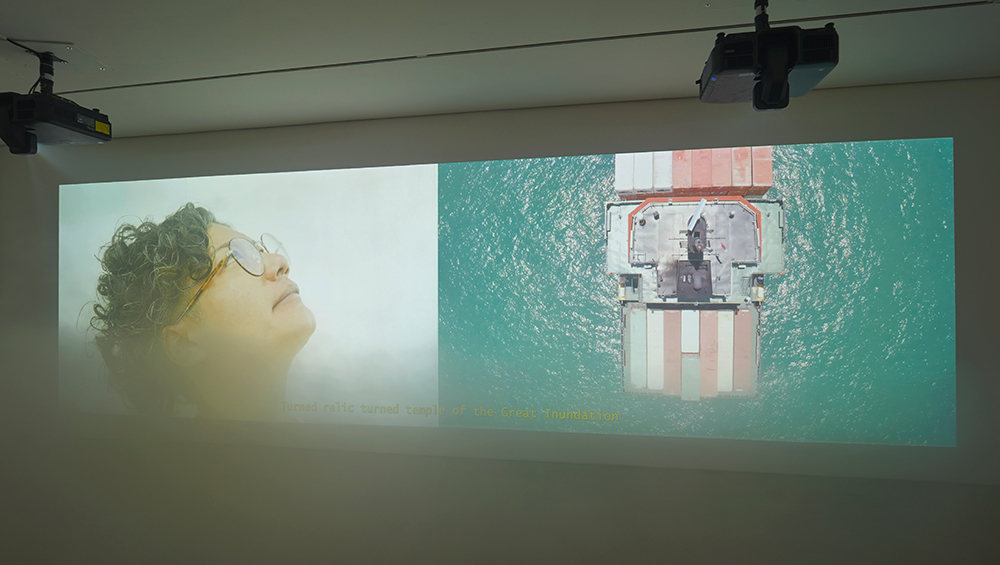
Kent Chan, Future Tropics, 2023. Exhibition view. Commissioned and produced by Gasworks. Photo: Andy Keate.
Gasworks, London
25 May – 10 September 2023
by TOM DENMAN
Can heat be an artistic medium? In his first UK solo exhibition, at London’s Gasworks, the Amsterdam-based Singaporean artist Kent Chan proves not only that it can, but that it should be. Initially, I regret coming when there are so many people around – the gallery is stifling, especially in contrast with the English, very vaguely summer afternoon. The combo this makes with the tingly electronic music reminds me of a nightclub with no air-conditioning. However, the heaters on the wall, and the cloud of steam that spurts in from the corner of the room – where the artist has installed barrels of water and a humidifier as part of Monsoons (2023) – affirm that I am not meant to be comfortable. Not if I want to experience the fullness of Chan’s intensely kinaesthetic, environmentally oriented work.
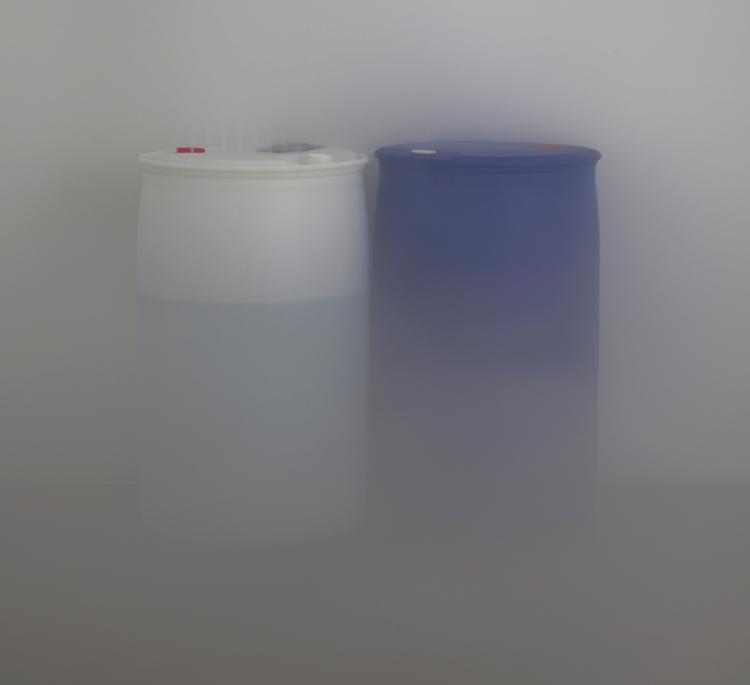
Kent Chan, Future Tropics, 2023. Exhibition view. Commissioned and produced by Gasworks. Photo: Andy Keate
Normally, in crowded galleries, we politely bargain for places to stand, and there is an implicit code that keeps us apart. Here, Chan breaks this code. The liquid molecules in the air that connect and divide us, that blur our vision and dampen our speech, also remind us that it is more than lines of sight, or floor space, that we are negotiating. Waves of heat and sound pound through our bodies; it becomes palpable that our relationship to one another is as energetic – carried through vibrating atoms – as it is sensory.
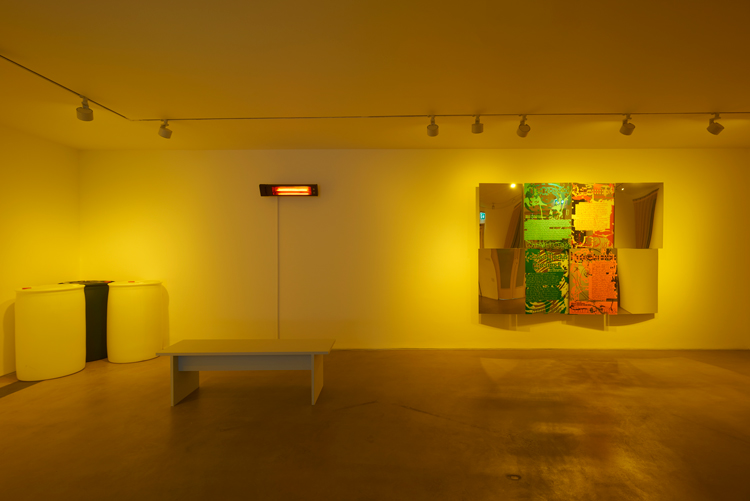
Kent Chan, Future Tropics, 2023. Exhibition view. Commissioned and produced by Gasworks. Photo: Andy Keate.
What we feel and hear corresponds to what we see. A grid of mirrored plexiglass, hung unevenly, wobbles the opening room’s dim yellow light, detaches heads and limbs, splices them with those of others. We wrestle with our own bodies, revel in our scrambled interconnectedness, while part of us might also yearn to be discrete, sanitised, dry, able to breathe. It is a complex, contradictory feeling, as hard to parse as thermoception, our inbuilt ability to sense temperature, which Chan targets directly and indirectly, making us feel the heat while also projecting it via other sensations: touch, sound and sight, as well as proprioception, our own bodily awareness.
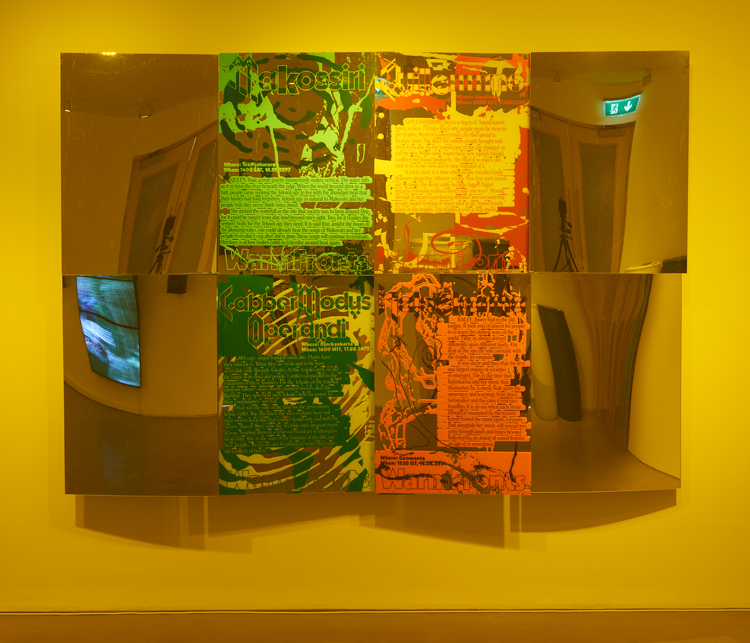
Kent Chan, Future Tropics, 2023. Exhibition view. Commissioned and produced by Gasworks. Photo: Andy Keate.
Printed on four of the mirrored sheets are what could be posters for club nights: neon-effect font, indicators of venue and time, and passages of text lyricising heat’s interconnective power. “Sound travels faster in the tropiks,” is written on one of them. Heat accelerates the atmosphere’s vibration; even what we read is felt shaking within us. The microcosm of the room’s atmosphere resonates with something larger, something deeper.
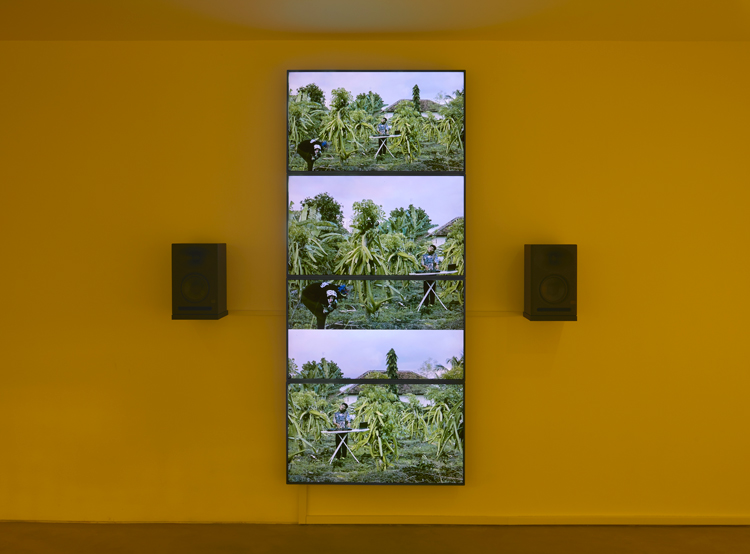
Kent Chan, Future Tropics, 2023. Exhibition view. Commissioned and produced by Gasworks. Photo: Andy Keate.
The plexiglass mirror constitutes a part of Warm Fronts (2022), the other part of this installation being a four-channel video on the opposite wall. Here we see, and hear, the DJs from the posters performing in different tropical landscapes across the world, the sequence occasionally interspersed with satellite images of the curvature of the earth – that gaseous, heat-trapping membrane. Guillerrrrmo and Kaleekarma, in Brazil and India respectively, seem to perform before an audience we cannot see – but, of course, we are the audience – while Makossiri sets herself up on a rock in front of a colossal waterfall outside the Kenyan town of Nyahururu, the electronic beats in spiritual communion with the roaring cascade. On the corresponding poster is written: “It is said that, amidst the boom of the plunging water, one could already hear the songs of Makossiri and her people from afar. Long after she is gone, these songs will continue to resonate. Her story is of how bodies come to (r)evolve around heat again.” The sense is of something ancient that is ingrained and continuing to be ingrained in the landscape, a time warp that mixes pasts, presents and futures. Sound is transferred through time and matter, reverberating in the heat that is fundamental to geological formation and deep time.
For the most part, the film presents the DJs sequentially, and although the first three acts bop along at a measured pace, the work culminates in a climactic, exhilarating performance by the Indonesian duo Gabber Modus Operandi. We see the masked Ican Harem MCing rapturously to DJ Kasimyn’s frenzied, high-alert crescendo, the four-way split screen matching the music with disorienting angles. Likewise, the tone seems purposely hard to pin down, split between reverence and crisis, union and discord. It is as if we were experiencing the harrowing offset of the other DJ sets – which is emphasised when, towards the end of this final segment, all four DJs appear on different screens to Gabber Modus Operandi’s music. Heat is to be worshipped because it is a part of our world, but it is also a critical issue for our future.
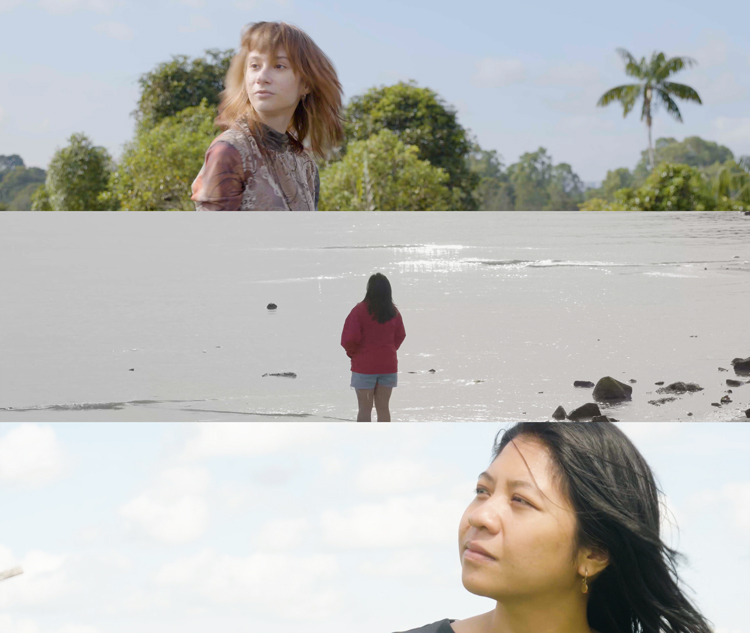
Kent Chan, Future Tropics, 2023. Film still composite. Two-channel video. Courtesy of the artist.
The second room, as sweltering and sticky as the first, is dedicated to Chan’s Future Tropics (2023), a film that more explicitly engages with climate catastrophe. Set in a future in which temperate climates have given way to pan-global tropics, the fictional narrative’s main thread follows a woman who receives messages from herself in a past life, with numerous myth-telling digressions. In one segment, for instance, she speaks about these messages to a friend, who responds: “Why you’ve been time travelling?” Her friend jokes that she might be a reincarnation of Nüwa, a Chinese goddess who used coloured stones to patch a hole in the sky. Then the same friend contemplates the difficulties she has connecting with her mother, who moved to Venus – where, as is explained later in the film, many humans migrated with the confidence that they could survive the heat. Later, another friend tells the central character not to stress over the meaning of the messages she is receiving, that they might be meant for a “different” her, and it seems to me that, in this brilliant film, the purpose of the stories is similarly open-ended. Storytelling is a means of fostering empathy and expanding the realm of possibility, finding new and rediscovering old, often radical ways of making sense of the world.
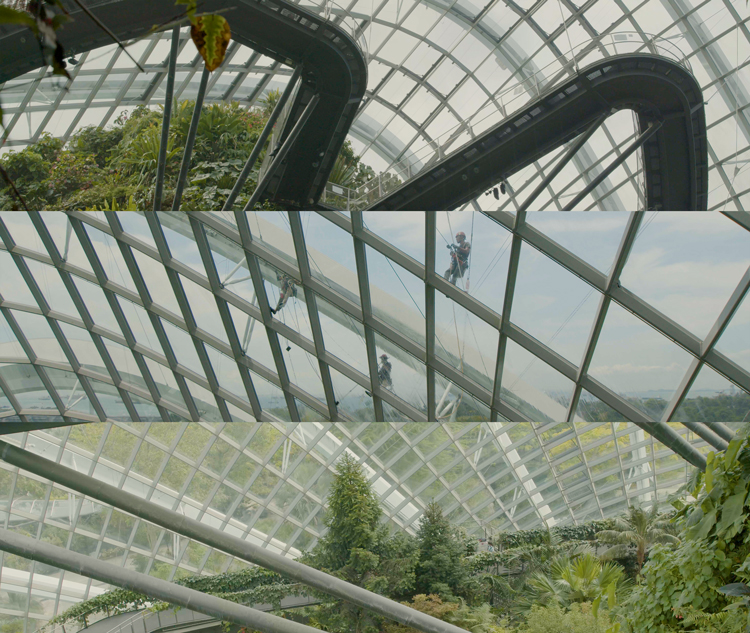
Kent Chan, Future Tropics, 2023. Film still composite. Two-channel video. Courtesy of the artist.
Chan’s frequent use of the split screen reifies the themes of interpersonal and inner connection, and the possibilities of alternate universes, dimensions and temporalities – all cosmically governed by the planet’s relentless overheating. In Future Tropics, long, still pauses in and between philosophical dialogues allow us to feel the ideas as they materialise in the atmosphere; they allow the heat to speak, on screen and off. One sequence follows a “curator of climates” through a vast, domed greenhouse, as she explains her role of passing on memories of former climates, the “temperates” in particular.
The proposition resonates with Chan’s practice, which also fuses storytelling with climate curation. Such reflexive nuances, as well as the film’s discursive, at times documentary-like style, make it urgently difficult to distinguish the fictional world from our own, this overlap enhanced by the way the sun-blanched cityscapes and tropical landscapes are reproduced in the room’s microclimate. It is as if what cinema scholar Laura U Marks called “haptic visuality”, or “touching with the eyes”, were insufficient to convey the urgency of what is happening on the screen. Real heat needs to be felt as well. Sight does not precede touch, or indeed thermoception, for there is no real difference between here and there. The air we breathe is the same.